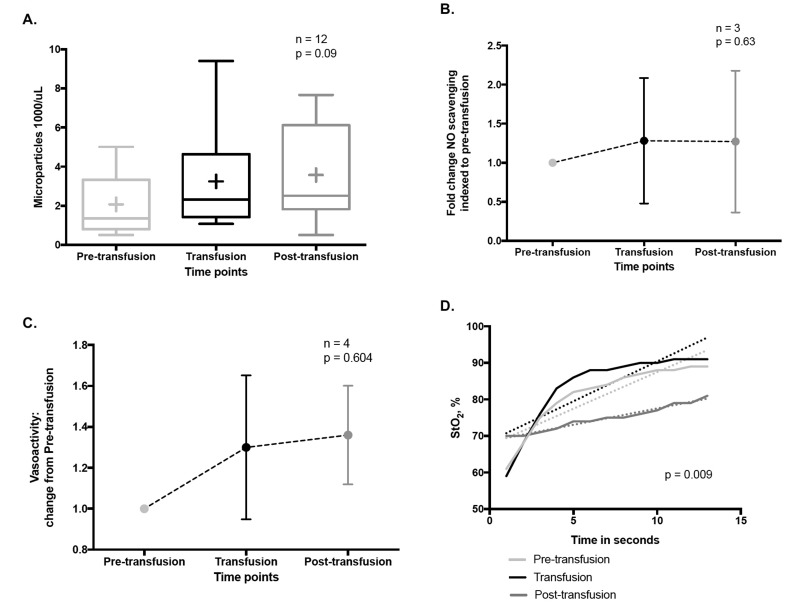Figure 8.
Pilot data of the vasoregulatory effects of transfusion related RMPs in humans.
(A) Circulating RMP abundance during RBC transfusion. Box and whisker plot of RMP concentration in plasma (flow cytometry, CD235a antibody) demonstrates an increasing trend during RBC transfusion (RM ANOVA). (B) NO scavenging relation to RBC transfusions. Using a validated NO consumption assay (Wang et al., 2004), we observe a ~1.3 fold increase in plasma NO scavenging following RBC transfusions (p=0.63, RM ANOVA). (C. Plasma vasoactivity is altered by RBC transfusions. Using a validated in vitro rabbit aortic ring array to assess vasoactivity, there was a 1.3 0.35 and 1.36 0.24 fold increase in plasma vasoconstrictive capacity during and after RBC transfusions compared to the pre-transfusion state, respectively. D. Change in hypoxic vasodilatory capacity in relation to RBC transfusion. A validated Dynamic Near Infrared Spectroscopy (NIRS) vascular occlusion test before, during and after RBC transfusion. Linear regression analysis showed a significantly slower rate of tissue resaturation post-transfusion as compared to the pre-and intra-transfusion states (p=0.0092). The rate of tissue resaturation is thought to correlate with capacity for capillary bed recruitment and hypoxic vasodilation (Said et al., 2016112).

